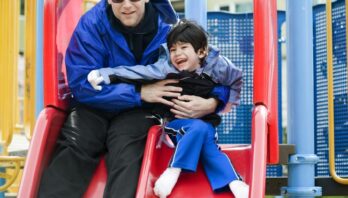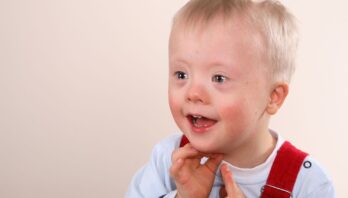What is a Disability?
Disabilities can impact a child’s health and capacity to:
- communicate, speak, understand, and use language
- think, reason, and learn
- function socially and emotionally within the constraints of cultural norms
- use their senses and bodies
(Adapted from Shelton, et al.)
Speaking of Disability



Disability is only one aspect of a child. How you speak of (and to) a child with disabilities will impact how that child and their supporters respond to you. Your response may also impact how others view the child. When talking about children with disabilities, reference the child first, and refer to the disability only if it is relevant. You would say, for example, child who has cerebral palsy or child who has an intellectual disability. This is known as People First Language
This section provides information about how to better communicate with and understand children with specific disabilities.




